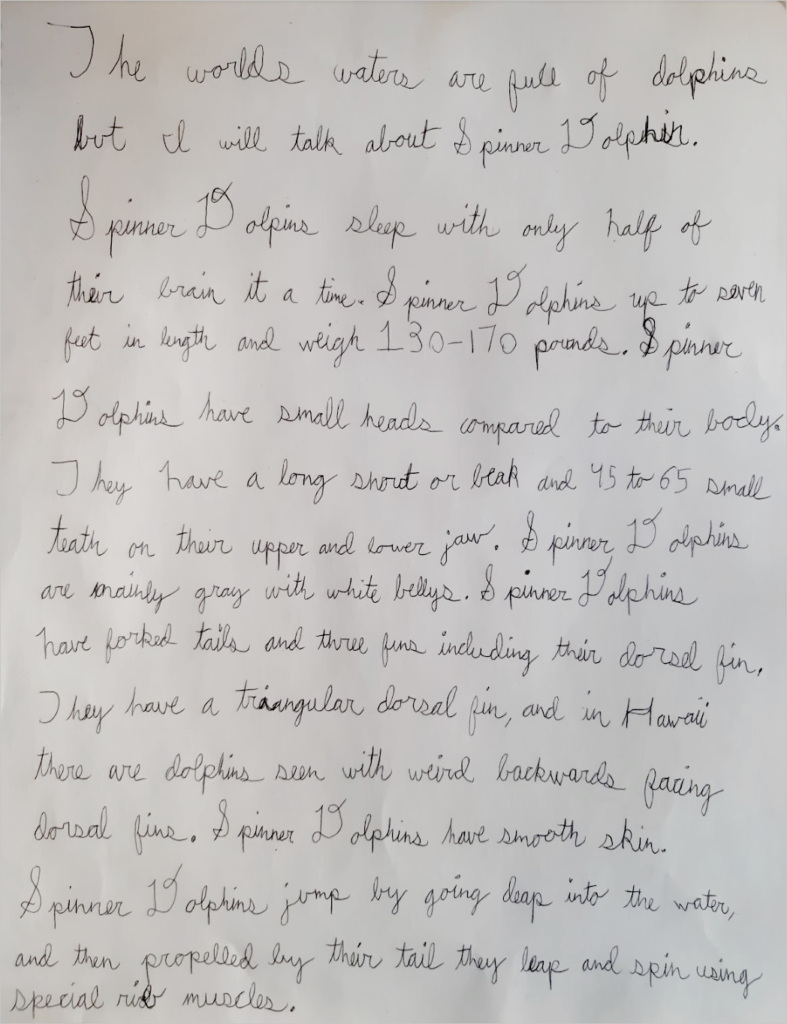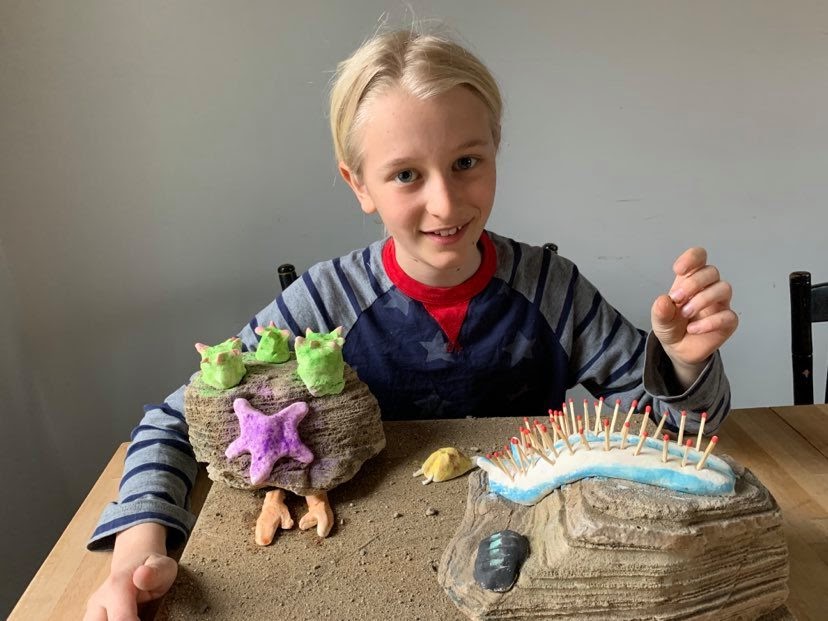In fourth grade, children become more curious about the world and their place in it. As a division between rational thought and imaginative thought begins to arise, they develop a new way of seeing, learning, and understanding their experiences and environment. The study of animals—those of the world around them, rather than those of fairy tales or fables—provides the opportunity for the students to develop a conscious connection to the natural world and its inhabitants and serves as an introduction to the subject of science.
 RESEARCH PROJECT:
RESEARCH PROJECT:
Animal Report & Diorama
The Animal Project is a month-long block that challenges fourth graders to study an animal of their choice, and in doing so learn how to conduct research, organize ideas and facts, and write a report. The final component of the project is the construction of a diorama, depicting their animal in its habitat.
Project Components
• Written report
• Drawing(s) of animal
• Diorama of animal in its natural environment
• Presentation
You may also include any/all of the following:
• A Day in the Life written by your animal using our alphabet and language
• Papier Mache life-sized or to-scale model of your animal
• Poem about your animal that gives a sense of how it is unique
• Costume and mask for you to wear as your animal
• Performance of your animal: moving and vocalizing as your animal in your costume.
Choosing an Animal
If you choose a local animal, you may be able to see it outside! Because this is a home project, I give you permission to choose any animal you wish, but be sure to choose an animal that you want to explore very thoroughly.
Written Report

Once you have decided on your animal, your parents and I will find information to read for your report. Using three or more articles, you will take notes on facts about your animal. You may not do online research on your own. Online magazines and websites can be researched by me and your parents and then you may read them from paper copies. Read as much as you can about your animal!
Information categories to research and include:
- I. Description of the animal:
- • Name of animal and family that it belongs to (example: Tiger – large cat family)
- • Physical description: size, number and type of legs, if any, color, the type of body covering they have (feathers, hair, scales…), special characteristics (example: elephants have long trunks and big fan-like ears)
- • Type of movement (it flies, swims, slithers, runs, jumps….) and quality of movement (Is it a fast runner, an agile leaper, a slow wanderer?)
- II. Description of how the animal lives:
- • Where in the world it lives and what it is like there (terrain, plants, land, weather)
- • What it eats
- • How it gets its food and how it eats
- • Family life: does it lay eggs, give birth to live young? What kind of parent is it? (Does it leave or stay with its young, does it raise its young? Who lives together, who lives alone? How big are groups your animal likes to be with?)
- • Include anything else you think is wonderful and/or important about your animal. Make your animal your companion in your thoughts, See if you can imagine your way into how it feels to be your animal, moving through the day, resting, hunting, keeping off the flies, playing in the trees. Imagine your tail!
- III. Relationship to humans, other animals, and the earth:
- • Who are its predators?
- • What relationship does this animal have to humans? (Do they eat it, have them in zoos, hunt them, raise them?)
- • Does this animal help or harm the earth? (Does it destroy plants, help keep the rodent or insect population down, provide beauty, etc.)
- IV. Describe the things you found the most interesting about your animal
- V. Illustration of your animal for your report (this can be a drawing or painting)
This illustration should be one full page (for the cover) and/or you can do smaller illustrations throughout the report showing the habitat, home, family life, predators, etc.
Once you have collected your facts, you will organize them into the written report. Read our instructions for How to Write a Research Paper. Your reports should be composed of paragraphs organized by topic. I will send a sample as needed. These reports should be 2 pages in length: this is a big project!
See the sample of this student’s diorama.
Learn more about our admissions process, and contact our admissions office if you have any questions.


